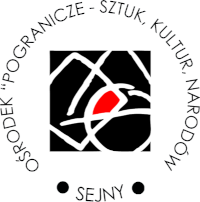The house itself was two-storied, a rare thing. From the hall you entered the dining room, on the left from the living room, quite a large one. Behind the dining room there was one room occupied in winter, as far as I remember, by Nina. Who lived there in summer - I do not know, perhaps some holiday makers. A similar room behind the dining room was, it seems to me, a drawing room. From the hall, the stairs led to the ground floor to two large rooms. One of those was occupied by Władek and his family. There were different corridors there, I do not quite remember whether they connected with the kitchen on the same floor or if it was downstairs. The entrance to the kitchen, because of the uneven ground, was on the outside. From the hall you could also climb upstairs, to the attic. The whole house, as far as I understand, had a basement and was covered with plaster. Whether it was made of wooden logs or it was half-timbered - I do not remember. The floor of the attic was covered with sand and walking across it you could reach one room with a floor of wooden planks. This was the room I used to stay in while on holidays.
The living room and the dining room were furnished in a quite old-fashioned way. I remember an old sofa, piano, desk, armchairs and some old wardrobe in the living room. In the dining room, just on the right from the entrance, there was a bookcase with books belonging to Stanisław Kunat, the emigrant of 1831 and professor of l’École des Batignolles in Paris. The books were bound in period leather, some of them, it seems, were written by him. At that time I had little interest in history.
To the right of the porch, that does not exist any more, at the same level, were paths leading into a small orchard, below them a few park alleys led towards the lake. There was an alley running along the lake, close to the shore, to the right of the jetty for boats until the swimming place far left, near the rushes. From the swimming place you could swim across the lake to the opposite shore (which I did once or twice), to the Hołny Manor belonging to the Meyers.
You could reach Sejny from Krasnogruda either through the forest, to the village of Ogrodniki and further down the road or via forest roads, first to the village of Żegary and then another forest road led to the town.
It seems to me that Krasnogruda used to be a large estate with a big forest of which little has remained. Almost the whole area between the manor and Lake Gaładuś, approximately 2 miles was covered with forests and I suspect that the wood cut from these forests served to satisfy some aristocratic whims, such as trips to the West. Nowadays, there are only fields between Lake Galaduś and the manor. I know little about the relations between the manor and the neighbouring villages: Ogrodniki, it seems to me, had mixed population, Żegary was purely Lithuanian. The Lithuanian border ran a few kilometres away from the manor, tightly locked as you know and I never heard about any border crossing in Ogrodniki.
The text dictated by Czesław Miłosz in Krakow on 16-30 April 2003 and written down by Agnieszka Kosińska who sent it in a letter to Borderland.


